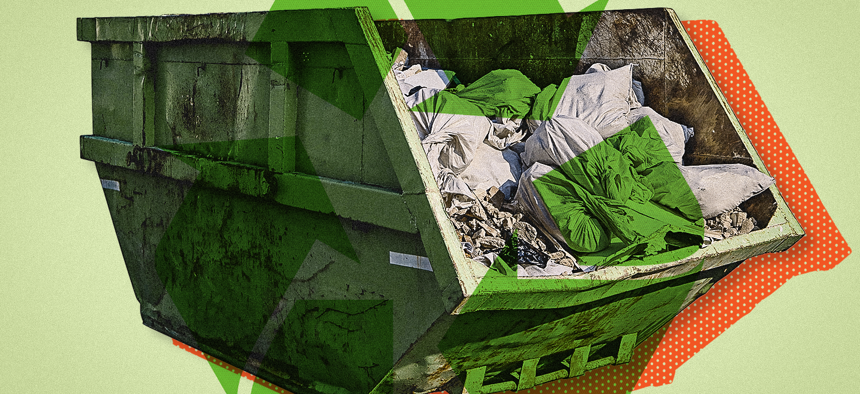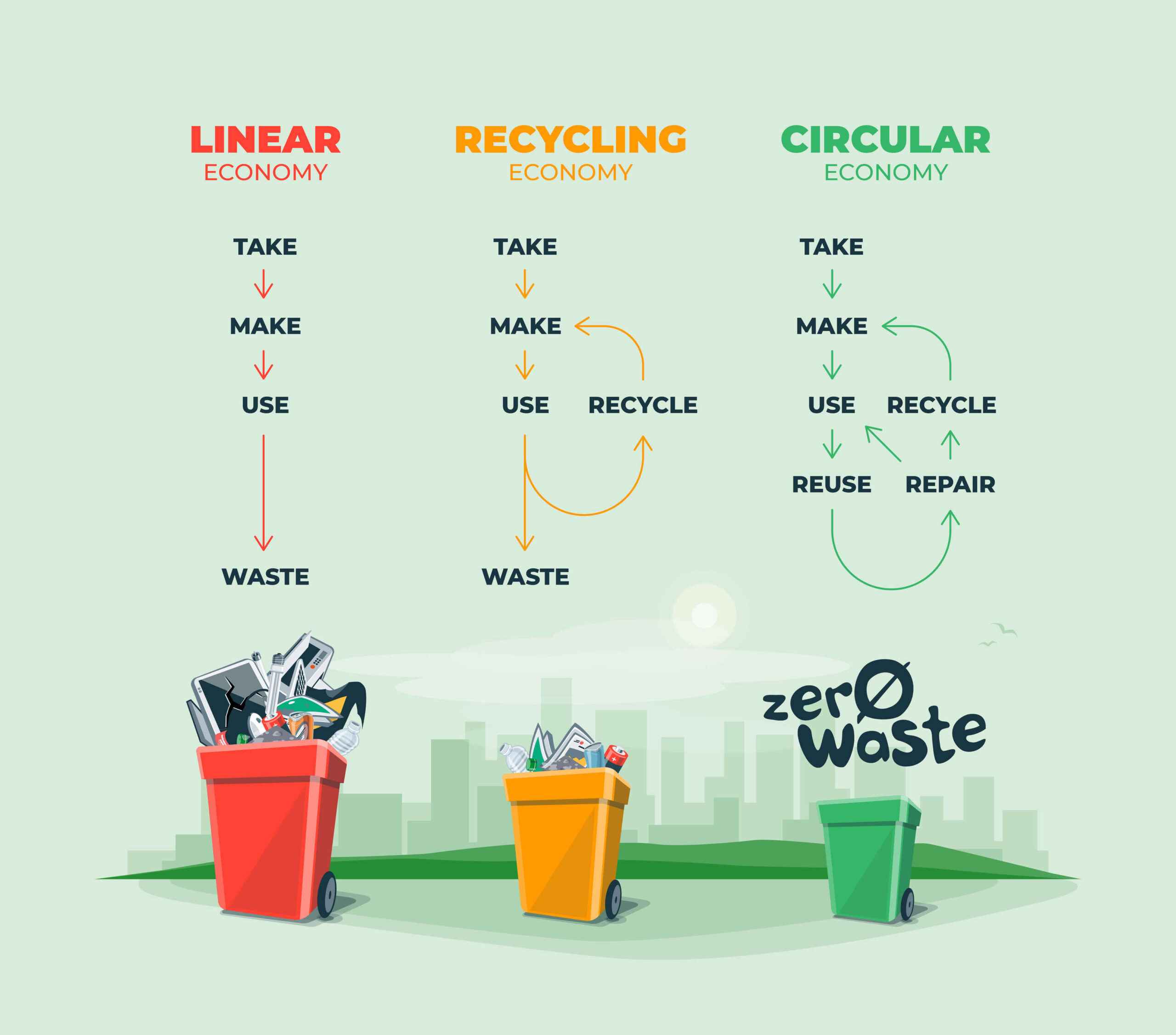Recognizing the Category and Handling of Various Kinds Of Waste
Reliable waste management is critical for environmental sustainability, calling for an extensive understanding of the classification and handling of different waste kinds. Household waste, industrial spin-offs, hazardous materials, digital refuse, and organic remnants each demand distinctive protocols to make sure safety and security and reduce environmental damage. Carrying out proper partition, therapy, and disposal strategies is vital to alleviate negative ecological effects and advertise source conservation. For circumstances, the composting of organic waste contrasts sharply with the intricate procedures needed to manage hazardous materials. This complex strategy to throw away monitoring emphasizes its complexity and the important requirement for specialized understanding in this domain.

House Waste
Family waste, encompassing a wide selection of disposed of products generated from day-to-day living activities, represents a substantial component of the general waste stream - recycling lives services. This category includes natural waste such as food scraps, backyard cuttings, and paper items, along with inorganic materials like plastics, steels, and glass. The diverse nature of home waste demands effective classification and monitoring to mitigate environmental effect and advertise lasting living practices
Efficient family waste management starts with segregation at the resource, assisting in recycling, composting, and risk-free disposal. Organic waste, as an example, can be composted to generate nutrient-rich soil modifications, minimizing landfill worry and improving dirt health and wellness. Recyclable materials, consisting of paper, glass, and certain plastics, can be refined and repurposed, lowering and saving sources energy intake related to brand-new material manufacturing.
Furthermore, unsafe home waste such as batteries, digital devices, and cleaning chemicals calls for specialized dealing with to protect against soil and water contamination. Public recognition campaigns and practical disposal alternatives play important duties in guaranteeing appropriate disposal and recycling of these products. By executing durable waste reduction methods and cultivating community involvement, municipalities can substantially ease the environmental footprint of family waste.
Hazardous Waste
Industrial waste, a major factor to international waste generation, encompasses a diverse series of products generated by production, construction, and other commercial tasks. This category includes spin-offs such as scrap steel, plastics, rubber, chemicals, and various other deposits. The composition and volume of hazardous waste can vary substantially depending on the industry and production procedures included. Reliable monitoring of hazardous waste is crucial for reducing environmental impact and promoting sustainable practices.
The handling of commercial waste usually involves a number of processes: collection, partition, disposal, and treatment. Collection systems are developed to successfully gather waste products from various resources within an industrial operation.
Taking on techniques such as waste reduction, resource healing, and recycling can significantly minimize the burden of industrial waste on the setting, adding to even more lasting industrial methods.
Contaminated Materials

The classification of contaminated materials is typically based upon its chemical and physical features. Hazardous wastes include damaging substances that can create damaging health and wellness effects also at reduced concentrations. Corrosive wastes can harm or ruin living tissues and products. Combustible wastes can easily stir up, presenting fire risks, while reactive wastes can create explosions or launch hazardous gases upon contact with various other compounds.
Effective contaminated materials management entails several crucial practices: recognition and segregation of harmful products, risk-free transport and storage, and proper treatment and disposal. Treatment approaches may consist of chemical incineration, stabilization, and neutralization. Regulative conformity is important, assisted by structures such as the Resource Preservation and Recuperation Act (RCRA) in the United States, which makes sure secure and environmentally sound administration of contaminated materials.
Electronic Waste
Electronic waste, commonly abbreviated as e-waste, stands for a growing challenge in waste administration as a result of the quick obsolescence of technology. This classification includes a wide array of discarded electronic gadgets, consisting of smart devices, computer systems, tvs, and household appliances. The complexity of e-waste hinges on its structure; these things have a combination of valuable materials such as gold and copper, along with hazardous substances like mercury, lead, and cadmium.

Regulations and policies, such as the European Union's Waste Electrical and Electronic Tools (WEEE) Regulation, objective to advertise responsible e-waste monitoring. These policies mandate suppliers to assist in the collection and recycling of digital products, therefore minimizing the burden on garbage dumps and minimizing ecological contamination.
Organic Waste
Organic waste, incorporating naturally degradable products such as food scraps, yard trimmings, and farming residues, makes up a substantial part of the metropolitan solid waste stream. This kind of waste is remarkable not only for its quantity yet also for its prospective ecological impact if not taken care of correctly. Organic waste can break down anaerobically in land fills, producing methane, a potent greenhouse gas adding to environment change.
Proper handling of organic waste involves several strategies. Additionally, diverting food waste from land fills via contribution programs can relieve food instability while decreasing waste.
Municipalities and organizations are significantly identifying the value of natural waste administration. Executing extensive organic waste reusing programs not just alleviates environmental impacts but additionally straightens with wider sustainability goals, promoting a round economic situation where sources are constantly reused and repurposed.
Verdict
Reliable waste administration look at here now and environmental management demand a detailed understanding of the classification and handling of numerous waste kinds. Home, industrial, unsafe, electronic, and organic waste each call for unique treatments for treatment, disposal, and partition. Appropriate management decreases environmental influence, saves resources, and advertises sustainability. Implementing ideal approaches for each waste type guarantees responsible and risk-free waste administration techniques, eventually adding to the security of ecosystems and public health and wellness.
Reliable waste management is critical for ecological sustainability, requiring an extensive understanding of the category and handling of numerous waste kinds.Household waste, including a wide selection of thrown out products created from day-to-day living activities, represents a considerable element of the total waste stream.Industrial waste, a significant factor to international waste generation, encompasses a diverse variety of products generated by production, building and construction, and various other commercial tasks (recycling lives services).Hazardous waste, a vital worry in waste monitoring, consists of products that posture substantial threats to human wellness and the setting due to their poisonous, corrosive, combustible, check it out or responsive properties.Organic waste, including eco-friendly products such as food scraps, backyard trimmings, and farming residues, makes up a significant portion of the municipal see this strong waste stream
Comments on “Exactly How Recycling Lives Services Help In Reducing Environmental Footprints”